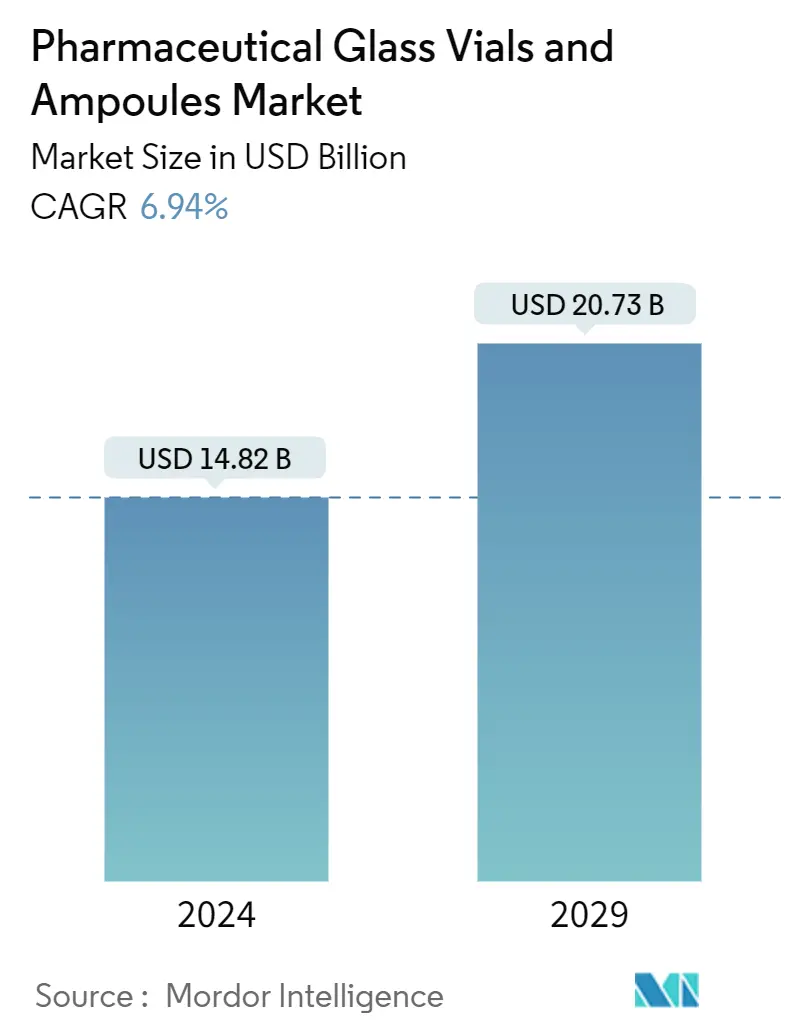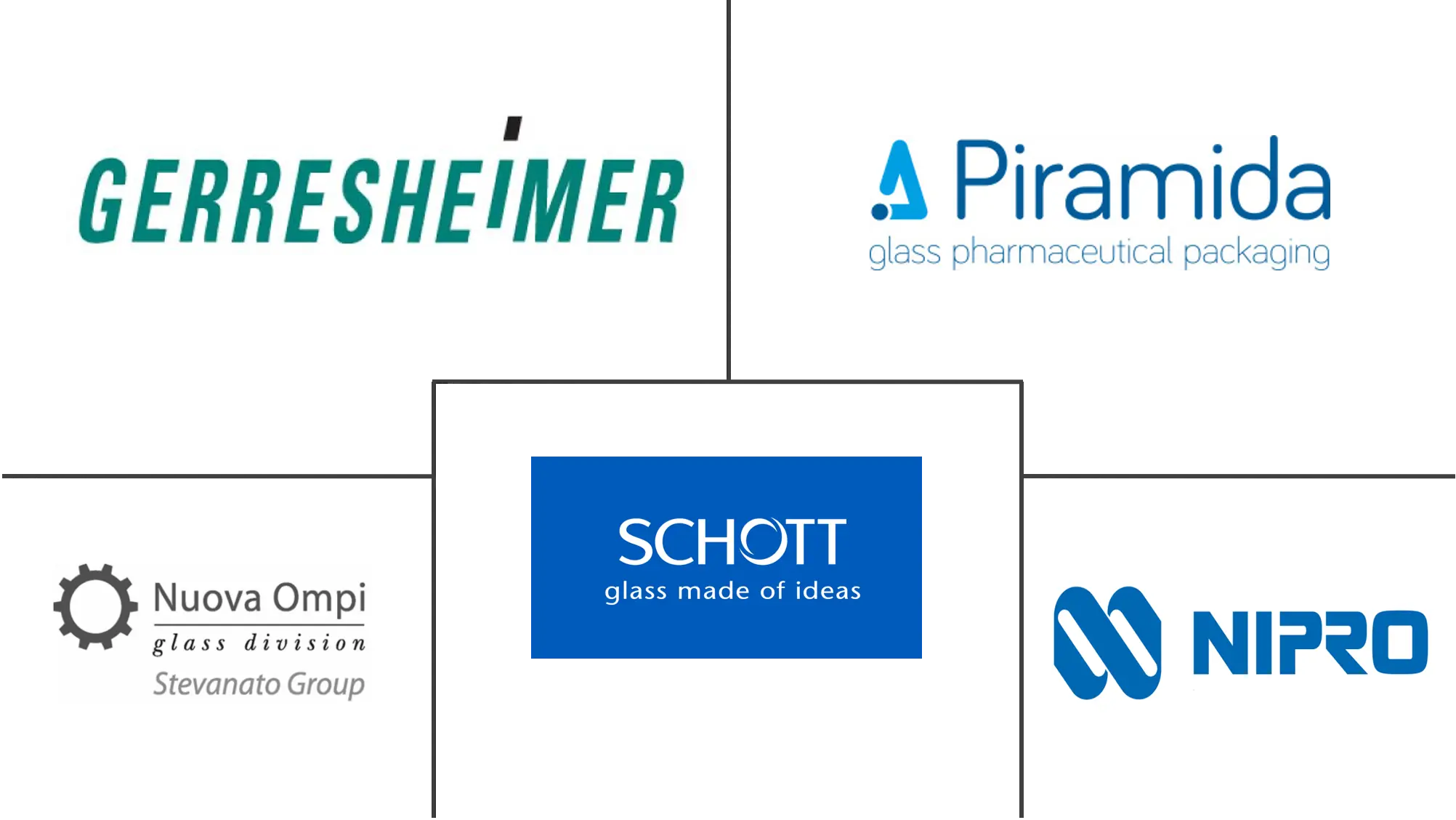Market Size of Pharmaceutical Glass Vials And Ampoules Industry

| Study Period | 2019-2029 |
| Market Size (2024) | USD 14.82 Billion |
| Market Size (2029) | USD 20.73 Billion |
| CAGR (2024 - 2029) | 6.94 % |
| Fastest Growing Market | Asia Pacific |
| Largest Market | Europe |
Major Players
*Disclaimer: Major Players sorted in no particular order |
Need a report that reflects how COVID-19 has impacted this market and its growth?
Pharmaceutical Glass Vials and Ampoules Market Analysis
The Pharmaceutical Glass Vials And Ampoules Market size is estimated at USD 14.82 billion in 2024, and is expected to reach USD 20.73 billion by 2029, growing at a CAGR of 6.94% during the forecast period (2024-2029).
Glass has long been the go-to material for safe packaging in the pharmaceutical packaging industry and is best suited to sustaining various chemical compositions. Also, glass vials and ampoules provide enhanced transparency, which allows easy inspection and monitoring of their contents.
- The growing pharmaceutical industry aids the market's growth. The demand for pharmaceutical glass vials and ampoules arises in densely populated countries. The increasing pharmaceutical production in these countries is further increasing demand. In addition, growing healthcare spending in developing countries like India and China is another driver of the market's growth.
- Emerging markets are described as growing and prosperous nations owing to their favorable demographic conditions, low labor costs, and abundant resources. The BRICS nations (Brazil, Russia, India, China, and South Africa) are the top developing economies. There are a few different approaches to classifying lower-tier economies. MIST countries include Mexico, Indonesia, South Korea, and Turkey. Another interpretation separates the two groups into CIVETS (Colombia, Indonesia, Vietnam, Egypt, Turkey, and South Africa) and Bangladesh, Egypt, Indonesia, Iran, Korea, Mexico, Nigeria, Pakistan, the Philippines, Turkey, and Vietnam.
- The significant characteristic benefits of glass, such as chemical durability and suitability to sustain various chemical compositions, are some factors driving packaging vendors to choose glass as a pharmaceutical material. Additionally, glass vials and ampoules offer improved transparency, making viewing and monitoring the contents easier. This provides additional protection because glass is chemically resistant to most pharmaceuticals and comparatively impermeable to air and moisture.
- Traditionally, the preferred materials across pharmaceutical packaging have been aluminum and glass. Over time, these materials became expensive due to raw material prices and other factors and could not provide economically viable solutions for packaging products across mass consumption. That marked the advent of plastics as an option.
- The COVID-19 pandemic caused massive demand for vials and ampoules worldwide. The large-scale production of the Coronavirus vaccine in various countries worldwide has significantly affected the market scenario. As a result of the pandemic, R&D innovation has experienced a golden period of advancement, and the drug delivery and packaging markets have also experienced continuous growth and innovation. Whether vials, bottles, ampoules, auto-injectors, connected devices, or cold chain storage of lifesaving COVID-19 vaccines, the pharmaceutical packaging and delivery sectors have played a critical role in the pandemic in transforming the way of delivering medicines in general.
- Further, increasing company activities in developing effective vaccines and growing vaccine approvals are also contributing to the segment's growth. In August 2022, the US FDA approved the Moderna COVID-19 vaccine and the Pfizer-BioNTech COVID-19 vaccine as bivalent formulations of the vaccines for use as a single booster dose at least two months following primary or booster vaccination. Therefore, these continued developments in the vaccine industry post-COVID-19 have bolstered the demand for glass vials and ampoules.
